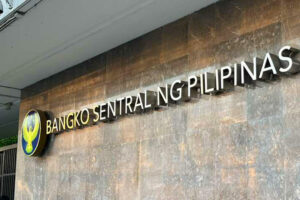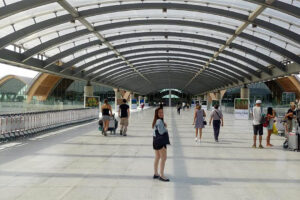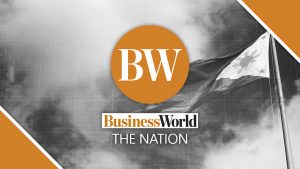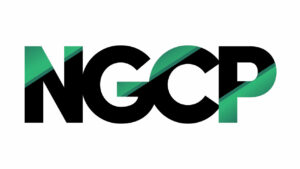BSP seen to continue easing cycle

By Luisa Maria Jacinta C. Jocson, Reporter
THE DOOR is now wide open for the Bangko Sentral ng Pilipinas (BSP) to continue its rate-cutting cycle although at a gradual pace, analysts said.
“With luck coming into play, the door for the BSP to hasten its easing cycle has swung wide open,” HSBC economist for ASEAN (Association of Southeast Asian Nations) Aris D. Dacanay said in a report.
The Monetary Board slashed rates for a second straight meeting on Wednesday with a 25-basis-point (bp) cut, bringing the key rate to 6% from 6.25%.
The BSP has now lowered borrowing costs by a total of 50 bps since it began its easing cycle in August.
“The BSP may continue to cut interest rates in the coming months, although aggressive rate cuts are unlikely due to domestic and external considerations,” Bank of the Philippine Islands (BPI) Lead Economist Emilio S. Neri, Jr. said in a report.
BSP Governor Eli M. Remolona, Jr. said that they prefer to take “baby steps” in adjusting policy rates, referring to quarter-point cuts. He noted that a 50-bp cut may be too aggressive and would only be likely in a hard-landing scenario.
Mr. Remolona also signaled the possibility of 100 bps worth of cuts in 2025. However, he said rate cuts will not necessarily be done at every policy meeting.
“Given that inflation is expected to remain within target over the policy horizon and that economic growth should stay fairly robust, we expect the BSP to continue its gradual easing,” Citi economist for the Philippines Nalin Chutchotitham said.
RATE CUT IN DECEMBERAnalysts expect the BSP to deliver another 25-bp rate cut in December, in line with the central bank’s own signals.
“Given the persistently weak private consumption and improving inflation outlook in the near term, we now think that the BSP will cut its policy rate by 25 bps to 5.75% at its meeting in December 2024,” ANZ Research said in a report.
ING Bank likewise sees a 25-bp cut in December amid expectations of within-target inflation.
“We expect CPI (consumer price index) inflation to average 2.9%, well below the midpoint of the target band in 2024. The Philippines should benefit from improving global food supplies and lower rice prices following India’s lifting of its export ban on rice,” it said.
Mr. Dacanay expects the Monetary Board (MB) to cut by 25 bps at its next four policy meetings.
“We maintain our policy rate forecasts and expect the BSP to cut its policy rate again by 25 bps during the last rate-setting meeting for 2024. We then expect the BSP to cut its policy rate by 25 bps in each of the first three Monetary Board meetings of 2025,” he said.
“This also implies that the easing cycle will likely end in the second quarter of 2025 with the policy rate at 5% — a rate that is higher than pre-pandemic levels and a rate higher than what the BSP mentioned (on Wednesday). This is because we expect growth in 2025 to be strong when lower rice prices significantly boost household consumption.”
Ms. Chutchotitham also expects 25-bp cuts at the MB meeting in December, as well as the meetings in February, May and August next year. This would bring the policy rate to 5% by end-2025.
“We maintain our expectation of an additional 50-bp cut in 2026, to 4.5%. This would bring the policy rate slightly closer (but still a tad higher) to the pre-COVID average long-term policy rate,” she said.
“With the economy in a more ‘Goldilocks’ scenario, the BSP has options to remain flexible in its easing decisions, which may also include consideration of future Fed decisions and impact on the foreign exchange market,” she added.
RISKSBPI’s Mr. Neri also sees the policy rate ending at 5.75% by end-2024, but warned of risks that could change this outlook.
“However, this outlook may evolve depending on what happens now until then, especially abroad. Recent developments have shown how economic data can surprise the markets and quickly lead to a shift in sentiment,” he said.
Mr. Neri cited risks such as the possibility of a pause by the US Federal Reserve in December, rising global oil prices and peso depreciation.
He said inflation should remain manageable in the next 12 months but warned of potential supply shocks.
“However, upside risks remain, particularly with the possibility of La Niña and the increase in cases of African Swine Fever… Inflation in the Philippines remains sensitive to climate conditions, and another extreme weather event could trigger a spike. On the other hand, stable commodity prices amid China’s economic slowdown may offset these risks,” he said.
Both Citi and BPI expect headline inflation to settle at 3.2% this year, before easing to 2.8% next year.
The BSP chief on Wednesday said the balance of risks to the inflation outlook for next year until 2026 has shifted to the upside.
The BSP trimmed its baseline inflation forecast to 3.1% (from 3.4%) for 2024 but raised the projection to 3.2% (from 3.1%) for 2025 and 3.4% (from 3.2%) for 2026.
Mr. Neri also cautioned the BSP against easing aggressively as the country’s external position is “not as strong as before.”
“(This) makes the peso less resilient to external risks and developments, which could spill over into domestic inflation… Moreover, the outlook for inflation can change quickly given the current global environment and the domestic supply shocks that can easily materialize. A cautious approach to rate cuts might be needed in order to offset these risks and ensure stability in the markets.”
Mr. Neri also flagged the possibility of a pause, though small, if the peso continued to be under pressure.




